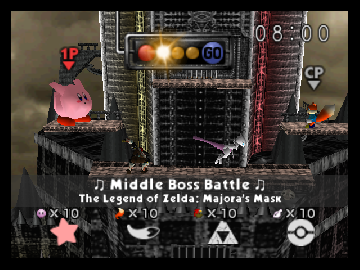Q-bert (USA)
Juega Q-bert (USA) en línea en tu navegador. Sin necesidad de descargar.
Sobre Q-bert (USA) :
.png)
Q-bert: The Pyramid-Hopping Orange Icon of Arcade History
Jump into the surreal world of Q-bert, the distinctive puzzle-action game that introduced players to an orange, long-nosed protagonist navigating an isometric pyramid of cubes while avoiding a cast of peculiar enemies. As the titular Q-bert, players hop from cube to cube on a pyramid-shaped playfield, changing each cube's color upon landing until the entire structure matches the target color pattern, completing the level and advancing to increasingly difficult challenges. The unique visual design of Q-bert centers on its isometric perspective that creates the illusion of 3D space within the limitations of early arcade hardware, establishing a distinctive look that immediately set the game apart from its contemporaries upon its 1982 debut. Throughout a session of Q-bert, players must contend with a variety of bizarre opponents including Coily the purple snake who relentlessly pursues our hero, bouncing red balls that fall from the top of the pyramid, and the mischievous Wrong-Way and Ugg who patrol the sides of the structure. Q-bert himself became instantly recognizable for his unusual appearance and the synthesized gibberish he speaks when jumping or losing a life, with his frustrated expressions and nonsensical exclamations becoming iconic elements of early gaming character design. With its perfect balance of simple concept and progressively challenging gameplay, Q-bert delivers an addictive arcade experience that tests spatial awareness, planning, and quick reflexes while establishing a weird yet charming aesthetic that has helped the orange hero endure as one of gaming's most distinctive characters.
The Cultural Impact of Q-bert in Gaming History
Released by Gottlieb in 1982 during the golden age of arcade gaming, Q-bert emerged as one of the most successful and distinctive titles of its era, establishing itself as a fixture in arcades and eventually making its way to numerous home consoles and computers. The game was created by Warren Davis and Jeff Lee, with its unusual protagonist reportedly inspired by a dream and the gibberish language developed when the team decided that actual swear words would be inappropriate for the character's frustration. Q-bert's success during the competitive arcade market of the early 1980s led to an animated TV series, merchandise, and numerous ports and sequels, though none achieved the cultural penetration of the original arcade version. The unique visual style and character design of Q-bert has ensured its place in popular culture far beyond its initial release, with the orange character making cameo appearances in films like Wreck-It Ralph and serving as a recognizable symbol of the golden age of retro games. Despite the simplicity of its core gameplay, Q-bert introduced innovations in visual design and character personality that influenced how developers approached game characters in subsequent years. Today, Q-bert remains a beloved classic that continues to appear in various compilation releases and reimaginings, standing as a testament to how distinctive visual design and perfectly tuned difficulty progression can create an enduring gaming experience that transcends the technical limitations of its era.
Mastering the Pyramid Jump
What Makes Q-bert an Enduring Arcade Classic
- Unique isometric pyramid playfield creating pseudo-3D gameplay
- Color-changing puzzle mechanics that grow increasingly complex
- Distinctive enemy characters including Coily the snake and the bouncing red balls
- Flying discs that provide escape routes from tight situations
- Progressive difficulty with new color patterns and faster enemies
- Iconic sound design featuring Q-bert's synthesized gibberish expressions
- Instantly recognizable character design that stands among the most distinctive in retro games
Navigating Q-bert's Colorful Challenges
Playing Q-bert involves mastering the directional controls that correspond to diagonal movement on the isometric pyramid, a concept that can feel counterintuitive at first but soon becomes second nature. The core gameplay revolves around strategic hopping to change all cubes to the target color while planning routes that avoid the various enemies that populate the playfield. Understanding enemy behavior is crucial for success in Q-bert, particularly Coily the snake who actively pursues the player but can be defeated by luring him off the pyramid by using the flying discs that appear periodically at the sides of the structure. Resource management comes into play as players must decide when to use these flying discs, which provide temporary escape but are limited in number during each level. As players progress through Q-bert, the color-changing mechanics become more complex, eventually requiring multiple jumps on each cube or specific sequences of jumps to achieve the target pattern. Like many challenging retro games of the arcade era, Q-bert implements a lives system where contact with any enemy results in losing a life, expressed through Q-bert's iconic frustrated exclamations as he falls off the pyramid. The difficulty curve increases through faster enemy movement, more complex color patterns, and additional obstacles, creating a test of reflexes and planning that continues to challenge players even after they've mastered the basic mechanics.
.png)
.png)
(Independent).png)
.png)
.png)
.png)
.png)

.png)
.png)
.png)
 (En,Fr,De,Es,It,Nl).png)